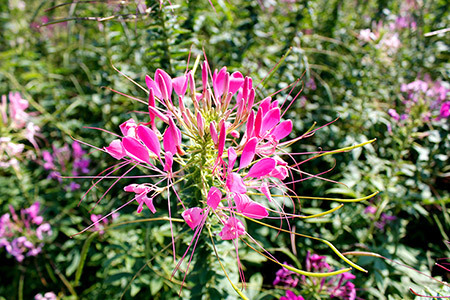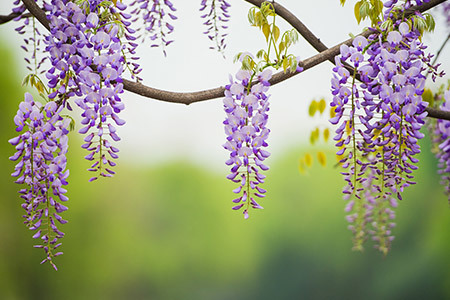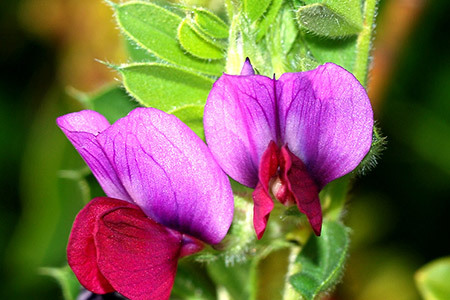American wolf tail grass
A landscaping and flower seed company mainly engaged in the production, sales, and export of flower seeds, tree seeds, forage seeds, green manure seeds, lawn seeds, and medicinal herb seeds.
Classification:
Forage and green manure seeds
Telephone:
Product Description
American wolf tail grass, also known as imperial millet, has a long history of cultivation in our country. Historically, it was often used as a tribute to the emperor, and there are still sporadic local varieties cultivated today, such as Gansu Minqin imperial millet, Hunan pearl millet, and Tanghe pearl millet. The largest and most widely distributed cultivation area in the world is in the tropical grasslands of Central and West Africa between latitudes 10° and 18°, where it is most produced and utilized as food and fodder crops, particularly in some hot, arid, and low-rainfall countries in Africa and South Asia.
1. Biological characteristics:
Annual, dual-purpose grass of the Poaceae family. The plant is lush, compact in shape, about 250 cm tall, with a developed and dense root system, averaging 12.7 tillers, with a maximum of 20, and 4-6 spikelets per stem. The stems are upright, round, with short internodes, and have many leaves, with 17 leaves on the main stem, lanceolate, 67.2 cm long, with wavy edges, soft and smooth texture, and no disease spots; the inflorescence is spike-like, candle-shaped, 25 cm long, with about 3400 grains per spike, a thousand-grain weight of 6g, and a single spike weight of 90.72g. The seeds are gray, with a hard rice quality, grayish-white, edible, and have a growth period of 120 days in the North Sea, maturing green. After harvesting, the straw remains fresh green.
High yield, with an average cultivation level of 10 tons per mu in the Yangtze River basin. There are no pests or diseases during the growth period, but the sweet grains are susceptible to underground pests and birds during sowing and seed maturity. It prefers warm and humid climatic conditions, is resistant to early frost and lodging, and is suitable for planting in vast areas of the Yangtze River basin. It has good quality, high crude protein content, and is dual-purpose. Hybrid offspring show significant trait segregation, and biological yield decreases significantly. Therefore, hybrid offspring are not suitable for seed retention.
2. Planting methods and precautions:
1. Land preparation: The seeds are small, with thin seed coats, and germinate easily, but the young shoots have weak soil penetration ability. Therefore, it is necessary to create a good seedling bed for germination, with fine tillage and crumbly soil, and sowing should be done under suitable moisture conditions.
2. Sowing: Sow when the soil temperature is stable above 25°C. In the middle and lower reaches of the Yangtze River, the sowing period is generally from late April to mid-May. Apply sufficient seed fertilizer to protect the seedlings, and treat the seeds with pesticides before sowing or apply toxic soil after sowing to prevent underground pest damage. When sowing, cover the soil lightly (sowing depth about 1 cm) to facilitate seedling emergence, with a sowing amount of 1.5 kg per mu. Both row sowing and broadcasting are acceptable, but the best row spacing is 40-50 cm, with no thinning required; when using for green manure, thinning is necessary, maintaining a seedling count of 75,000 to 90,000 plants per hectare.
3. Fertilization: The American wolf tail grass has a developed root system and strong nutrient absorption capacity, leading to high biological yield, so sufficient base fertilizer should be applied. Generally, apply compound fertilizer at 40-50 kg per mu, or nitrogen at 50 kg per mu, phosphorus fertilizer at 40 kg per mu, and potassium fertilizer at 20 kg per mu, ensuring that the fertilizer is dispersed and incorporated into the soil. If using organic fertilizer, the amount of chemical fertilizer can be appropriately reduced. Top dressing: To accelerate seedling growth, apply 5-10 kg of urea per mu when the seedlings reach a height of 15 cm, and then apply 10-15 kg of urea per mu after each cutting, combined with tillage and soil covering.
4. Management: American wolf tail grass grows slowly and is easily invaded by other weeds, so timely tillage and weeding should be carried out to promote early growth. If drought occurs during the seedling stage, irrigation should be done promptly. American wolf tail grass requires a lot of nutrients, and only under high fertility conditions can its yield potential be realized, so after each cutting, apply 10 kg of urea per mu.
Key words:
Immediate consultation
If you are interested in our products, please leave your email, we will contact you as soon as possible, thank you!
Product recommend
RELATED INFORMATION
02
/
12
News dynamics
01
/
30
News dynamics
07
/
17
News dynamics
04
/
18
News dynamics
01
/
19
News dynamics
Urban greening is an important component of urban construction.







